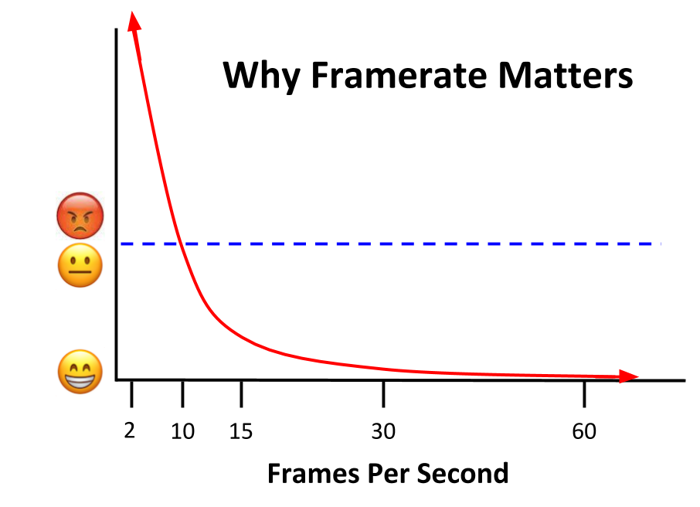Framerate

This graph conveys two important lessons.
On the slow side it shows the user experience degrades basically without bound as the framerate gets slower. This is really important because it’s easy to be complacent when the framerate of your application starts getting slower.
At first, no one really even notices. But as you approach 10Hz and below everyone will notice, and they will find your software basically unusable.
On the fast side, it shows that for general graphics and scientific visualization, it really doesn’t pay to render things faster than 60Hz. This is an important lesson. It means there is a point of diminishing returns. If you are at 60Hz that is probably good enough.
Note that VR applications do need framerates higher than 60Hz. And many competitive gamers also demand faster framerates. However for “general desktop graphics” 60Hz is almost always totally sufficient.
Framerate?
When developing graphics software, it’s often better to think of milliseconds per frame instead of framerate. To achieve 60Hz each frame must take less than 16.7 milliseconds, which will translate to 60Hz. It’s easier to set budgets when you think in terms of milliseconds. For example, maybe you will allocate 5ms per frame for copying data to the graphics card.
Milliseconds per frame is the inverse of framerate. This difference between a value and its inverse comes up in other contexts, see Why We Should Measure by Gallons per Mile, Not Miles per Gallon.